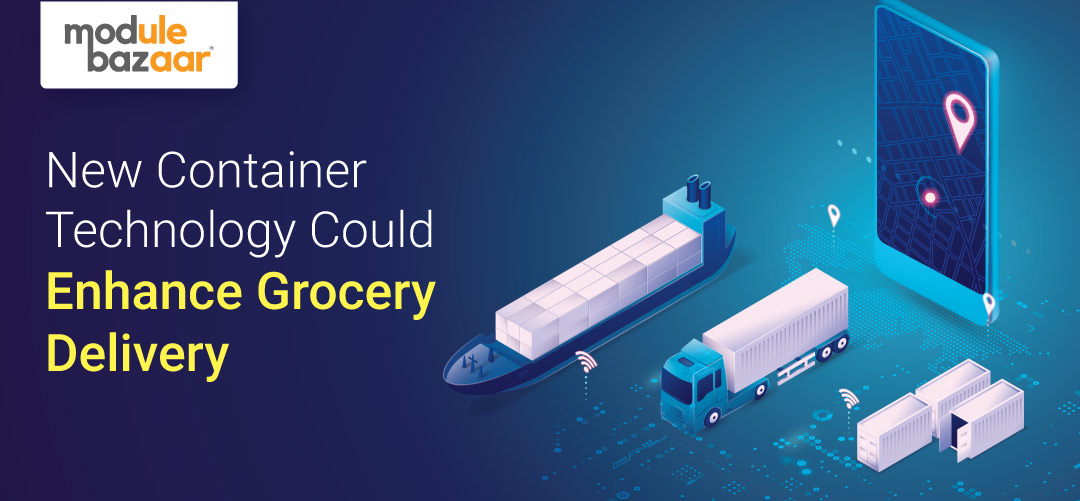Share the post "New Container Technology Could Enhance Grocery Delivery"
Grocery delivery is on the rise, and companies are investing heavily in new technology to make it more convenient and accessible to shoppers. The pandemic accelerated the growth of home delivery from supermarkets: only 13.1 million U.S. households used grocery delivery in 2019, but by May 2020, 43 million had used it from supermarkets or third-party services like Instacart, per Brick Meets Click. But there are still obstacles to making grocery delivery a viable option for many customers due to the scheduling requirements for same-day delivery. Mobile app and supermarket companies are working toward improved solutions to getting groceries delivered fresh and on time.
Services are determined to make deliveries that are efficient for their drivers while meeting the customer’s preference. Customers want to receive groceries in-person, but aren’t always available.
Delivery services have been pushing toward a 2-hour delivery time for groceries from ordering, even though this can be difficult in times of high demand. The leading third-party service Instacart reported in its Beyond the Cart A Year of Essential Insights findings that 85% of customers opt for delivery in 2 hours or less when offered options including 5-hour delivery or other scheduled options. It also found that orders during working hours increased 32% in 2020 as many customers were at home, but Instacart also expected order times to continue to spread out, especially if this would guarantee faster delivery during low-demand times.
New Container Technology Taking Off
Several companies are creating tools to make delivery less dependent on the customer’s schedule, which will increase the ability to deliver groceries at any time, even late at night. The UK-based supermarket Asda is testing refrigerated boxes that can be placed outside to receive deliveries. These containers are locked so no one but the owner and the grocery delivery driver can access them using a one-time code. Asda offered 850,000 delivery slots during the pandemic, a 90% increase. In the US, Walmart began testing similar containers from HomeValet.
These containers are insulated so groceries can last for several hours, and have separate areas for room temperature, refrigerator, and freezer storage so customers can order any product from the grocery store without losing freshness. The device can be set to reach the right temperature when the order is pending. The HomeValet containers are Internet-connected to let customers know when orders have arrived and even check whether there is space available for more
deliveries. It also has a camera to prevent thefts. The company said they are working on a model that will be built into the exterior of homes so customers can access them without going outside.
Read also: How Delivery Drones can Help eCommerce Industries During a Global Pandemic?
HomeValet’s CEO John Simms stressed to GroceryDive that its Smart Box would be “a retailer- and courier-agnostic product” so it wouldn’t become dependent on anyone retailer and customers would be able to use different delivery services, including non-grocery packages.
This trend offers a way to resolve the issues of scheduled grocery delivery. Customers won’t have to wait and receive packages in person. HomeValet and others imagine late-night and early morning deliveries when drivers and fulfillment center workers are less busy, so they can reserve their resources during peak hours for the fulfillment of on-demand delivery within one or two hours.
In addition, scheduled delivery dropped off in containers can fill more orders into a truck, completing as many as 20 or 30 at a time since they aren’t beholden to a specific arrival time. This will make deliveries more affordable to stores and let them offer more competitively-priced delivery fees to customers.
While many customers became comfortable shopping online during the pandemic, they may be less willing to deal with the inconveniences of scheduling home deliveries around their availability. As more people return to work and grocery delivery is no longer a vital service, grocery delivery apps need to find ways to streamline the experience and avoid any inconveniences that could lose them, customers. Grocery stores with their own mobile apps should look to innovations like these to improve their scheduled delivery and spread out deliveries over the whole day to avoid congestion and delays.


